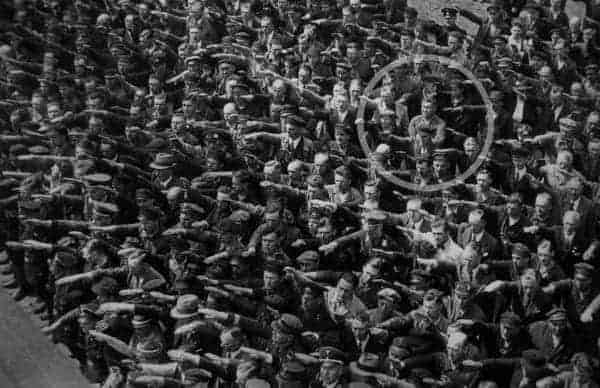When people talk about the Germans in World War II, they are portrayed as evil people who were bent on the destruction of the Jews or anyone who did not suit their idea of a perfect member of the Aryan race. Amid all the hatred, anger, and violence that existed in the Third Reich, there still remained German citizens who were willing to give their lives in order to stop the evil that had overtaken their country.
Sadly, many of these resistance groups and movements have been lost and forgotten among all the atrocities committed by the Nazis. Here are just a few of the German resistance movements and people, many of whom gave their lives, in order to try and stop the Nazi regime.

The White Rose
In 1942, Hans Scholl was a medical student at the University of Munich. That year he, along with his sister Sophie, Christoph Porbst, Willi Graf, and Alexander Schmorell created the “White Rose” movement. Hans Scholl had been a soldier on the Eastern Front and saw how Jewish laborers and prisoners were treated and he knew about the large number of Polish Jews and citizens that had been sent to concentration camps. All the members of the White Rose were horrified by the stories they heard about the mass murder of Jews.
The organization grew to include more students from Hamburg, Freiburg, Berlin, and Vienna. The students risked their lives and their freedom in order to transport and mail mimeographed leaflets that spoke out against the regime. They suggested sabotaging the armaments industry and proclaimed “We are your bad conscience. The White Rose will not leave you in peace.”
Members of the White Rose movement knew that it would take a military force to end Nazi control of Germany, so they sought to change the hearts and minds of the people. In January 1943, after the German army had been defeated at Stalingrad, Hans and Sophie handed out pamphlets to the students in Munich. The pamphlets urged them to rebel.
It was a janitor at the school who betrayed the students to the Gestapo. Hans, Sophie, and Christoph Probst were executed on February 22, 1943. Philosophy professor Kurt Huber was also arrested and accused of guiding the movement and its members. At his trial, he remained loyal to the cause and to the ethical philosophy of Immanuel Kant. He ended his defense with the words of Johann Gottlieb Fichte:
And thou shalt act as if
On thee and on thy deed
Depended the fate of all Germany
And thou alone must answer for it.
He was found guilty and executed.

